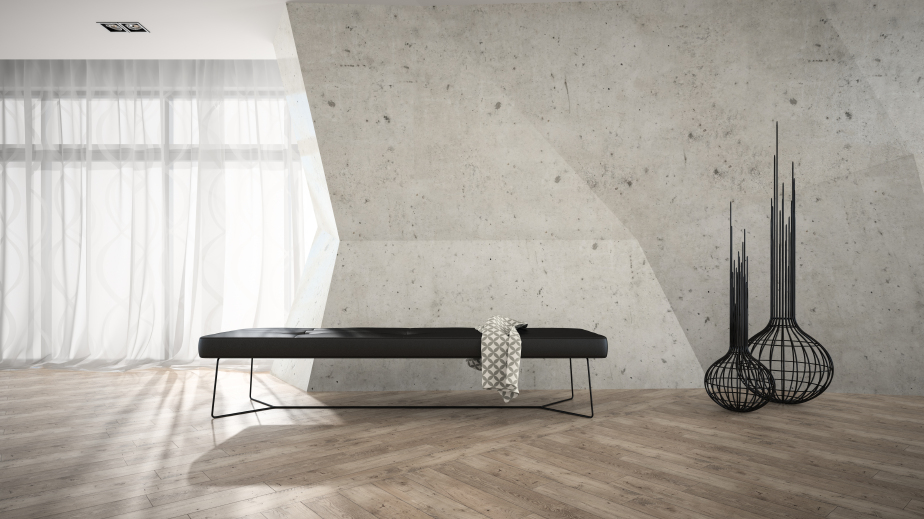Using concrete as a decorative element or simple insulator requires knowledge, precision and unlimited patience. It’s often better to rely on the support of a professional. But if you prefer to do it yourself for your own pleasure, you’re going to be spoiled.
Here’s a bit of advice.
- Apart from overly flexible wood floors, practically all floors can be covered with a concrete coating, as long as the surface is well-prepared to avoid cracks and the appearance of air bubbles.
- Use poured concrete, or install concrete slabs, including wall slabs.
- Appropriate for the bathroom and kitchen, concrete works rather well in the living room and bedroom.
- Save money using a same concrete for all rooms or a single floor.
- Brushed concrete (hence rough) is non-slip, which is ideal for areas frequented by seniors.
- There are several methods for making coloured concrete. It can be process-coloured concrete, coloured on the surface or painted. Natural or synthetic pigments and colour resins are part of the products used. However, colouring requires a series of attempts before the definitive application.
- Look into ultra high-performance fiber-reinforced concrete (UHPC). It is powerful and environmentally friendly.
- Try decorative panels evoking concrete on the walls, unless you cover them with mortar.
- A clear, smooth, concrete floor enhances the luminosity in a room by reflecting the natural light.
- If you opt for a concrete floor plan in the kitchen, a top coat of varnish or acrylic wax will double the protection of the polished concrete and make it easy to clean.
- Why not incorporate concrete in the table in the floor plan or the kitchen counter, including the sink?
- Fiber-reinforced concrete is good for stairways.
- Certain types of concrete need oleo/water-repellent treatment, or for plugging pores.
- There was a time when many renovators regretted choosing concrete. Too much ignorance resulted in major blunders. Times have changed with the massive amounts of information available on the Web and elsewhere.

For more information on ultra high-performance concrete, refer to the book Matériaux sains below.
Cellular concrete is made of sand, lime, aluminum powder and 80% air. It is very light. It does honour to a home since manufacturing does not require any chemical products, which means no pollutants in the atmosphere, and it consumes little raw energy and energy.
Useful for exterior walls and as slabs for self-supporting floors, cellular concrete is also used to mount partitions and load-bearing walls. Inside the house. The renovator cuts it with a hand saw and assemble the blocks with thin-bed mortar.
In bricks or blocks, concrete hemp is light and cuts easily. To build a partition, the renovator fastens a plate to the ground on which he spreads a layer of mortar. A baseboard hides the base once the wall is erected. Brackets connect the upper part of the ceiling and the wall. A layer of mortar fills the expansion joints.
Lastly, pay special attention to the following three works. You will have everything you need to launch into, or simply continue, a concrete adventure.
References
- Le béton dans la déco, plus de 90 réalisations, Massin, Marie-Pierre Dubois-Petroff, 2011, 95 pages
- Bricoler sain pour vieux vivre chez soi, sous la direction de Marcel Guedj, Fleurus, 2009, 253 pages
- Béton et décoration, Isabelle Bonte, photographies Éric Thierry, Fleurus, 2009
Photos: iStock.com
